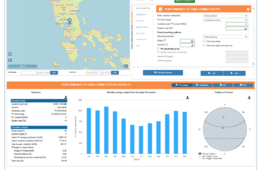JoeLansing
New Member
I'm getting closer to having a clue. I'm excited! I'm going to add a link to a quote for a 12KW system I was thinking about, but I don't think I need that many panels now do I? https://drive.google.com/file/d/18rnfzQHeonL4J6cSjuRb-imQ3cWjG36V/view?usp=drive_link
So I actually got a bill, for a fairly heavy use month. 588KWh. I also found this site Global Solar Atlas. I don't understand what it's telling me. Or at least I can't figure out how to convert what it's telling me to a meaningful result. I plug in small home, 8KWp (KWp?) of panels, and get back:
11.680 MWh per year
1700.5 kWh/m2 per year
How do I use those numbers against my 588KWh bill? Divide by 12 and something???? And are those ideal numbers? Clean panels, no clouds, etc.? My goal is to size panels that will run the house, and also keep a decent size battery up that will last for at least 2-3 days of rain. Or limp along at 300KWh per month for weeks after a typhoon. I'm also thinking of doing ground mount instead of roof mount for better efficiency, and maybe ease of covering the panels with plywood or something before a typhoon hits.
Thank you!
So I actually got a bill, for a fairly heavy use month. 588KWh. I also found this site Global Solar Atlas. I don't understand what it's telling me. Or at least I can't figure out how to convert what it's telling me to a meaningful result. I plug in small home, 8KWp (KWp?) of panels, and get back:
11.680 MWh per year
1700.5 kWh/m2 per year
How do I use those numbers against my 588KWh bill? Divide by 12 and something???? And are those ideal numbers? Clean panels, no clouds, etc.? My goal is to size panels that will run the house, and also keep a decent size battery up that will last for at least 2-3 days of rain. Or limp along at 300KWh per month for weeks after a typhoon. I'm also thinking of doing ground mount instead of roof mount for better efficiency, and maybe ease of covering the panels with plywood or something before a typhoon hits.
Thank you!



